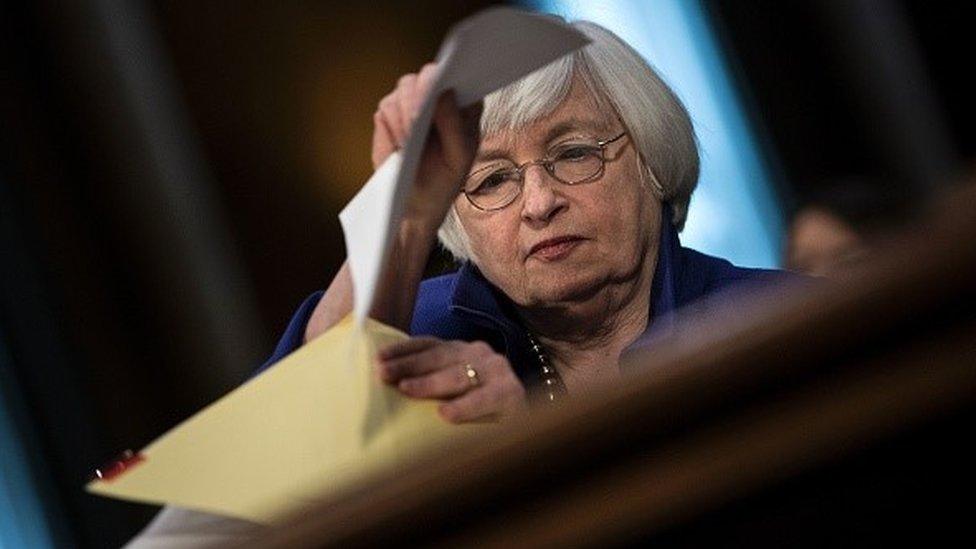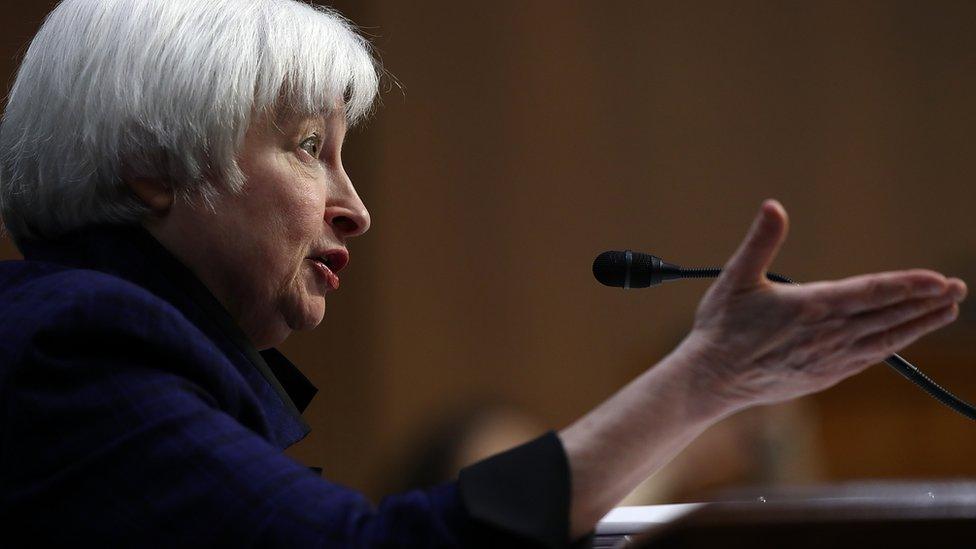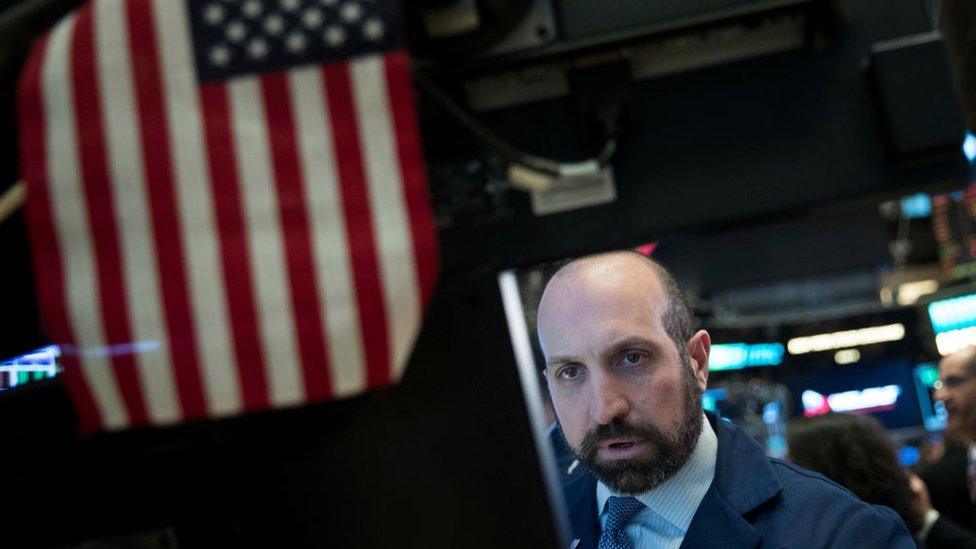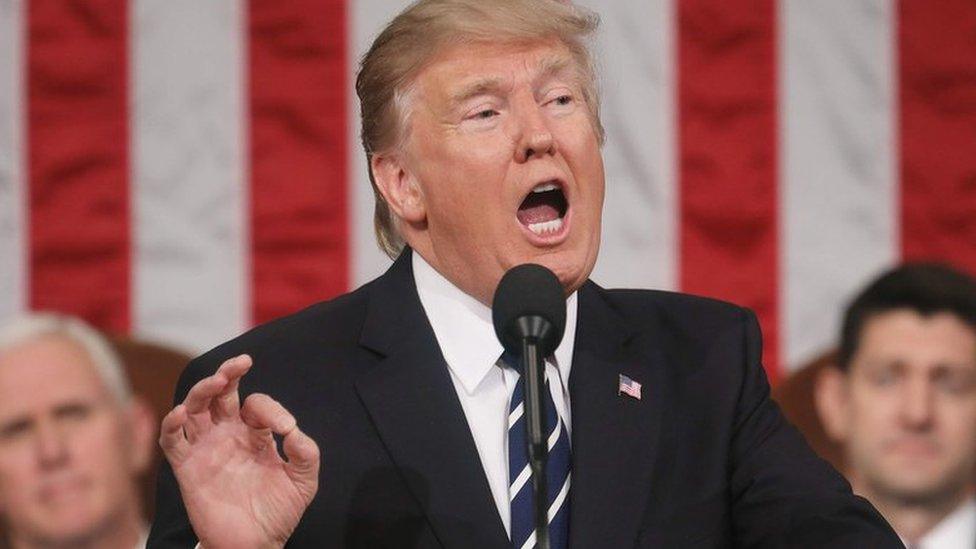US rates: The slow return to normality
- Published

Fed chairwoman Janet Yellen has said she does not want to stoke inflation
Back in the depths of the financial crisis the US Federal Reserve cut its main interest rate to close to zero.
It was an effort to prevent an even more severe economic downturn.
In late 2015, the Fed finally started the slow return towards economic normality - with the first rate rise in almost a decade.
The next move came a year later and now we have rate rise number three.
And the financial markets are expecting further steps this year, perhaps two more.
By normal standards that's a very measured, even slow pace of change.
But, as so many have said, the financial crisis took us into territory very far from normal.
What this series of moves tells us is that the Fed's policymakers think the US economy is in reasonably good shape, that it no longer needs the support provided by such very low interest rates.
Strong labour market
Key elements behind that judgement include the reasonably strong labour market and inflation getting back towards the Fed's target, which is 2%, external.
Unemployment is now far below the peak it reached during the recession brought on by the financial crisis. It's now 4.7%, compared with a high of 10% in October 2009.
True, the headline rate has been 5% or lower for 18 months.
But there has been a more marked decline in that period in a wider measure of labour market problems.
In addition to the unemployed, it includes people who want to work but have given up looking (not counted as unemployed in the headline number) and part-time workers who would like longer hours. The most recent estimate is 9.2%.
That figure underlines the fact that the headline rate does not tell the whole story about job problems, as President Trump often complained before he took office. But it is a figure that is published every month.

US unemployment is now far below the 10% peak following the financial crisis
There are other signs that suggest the jobs market is not back to full health.
Long-term unemployment (more than six months) is still not far short of one in four of the total unemployed. Before the recession it was closer to one in six.
Nonetheless, it's clear that the labour market is very much improved.
Inflation target
Inflation is another key element in the Fed's thinking.
Like many central banks it seeks to keep inflation close to a target.
The latest figure for the measure it uses (known as personal consumption expenditures) is 1.9%, just about on target. If you take out volatile food and energy prices, it's a little further below target, but at 1.7% not by very much.
The Fed's concern is that if it doesn't raise rates, inflation might go substantially above target.
The risk is there because unemployment is close to what the Fed's policymakers seem to think is the lowest it can go without aggravating inflation.
That's because there comes a point where employers seeking to hire more workers may have to offer sharply higher pay to meet that aim, and they could then pass that on to consumers in higher prices.
Falling prices
It's a striking contrast with the situation about two years ago when inflation went below zero. The US had a brief skirmish with falling prices or deflation. It can aggravate economic problems although the concerns were more acute in the eurozone and Japan.
It still is an issue in Japan. But like the US, the eurozone and the UK have put that problem behind them and have seen inflation rise markedly to levels close to their central banks' targets.
The Bank of England and the European Central Bank are not, however, in the business of raising interest rates in the near future.
Both have interest rates as about as low as they feel they can go, and both are trying to provide additional stimulus in the shape of quantitative easing, buying financial assets with newly created money.
Central bank policy in the US has by contrast gone a lot further on the road towards what might be called normal. It's not there yet.
The Fed's policymakers think that the longer term level for their interest rate policy is something like 3% and it is likely to take a few years to get there.
They have, however, taken another step towards ending the exceptional response that was prompted by the financial crisis.
- Published15 March 2017

- Published10 March 2017

- Published2 March 2017
